Gastronomy
The Province of Huesca has a gastronomic heritage forged by the legacy of the different towns that have passed through it.
It retains an identity of its own which, over time, has provided itself with the market of supplies that its land has provided. These identifying signs are determined by the product and its subsequent transformation in the kitchen, which leads to what we now know as classic recipes.
Like any regional cuisine, it is recognized as being indigenous that is made with the original products that are born within the territorial framework of the province.
Aragonese cuisine, incorporating a wide product directory, is based on popular stews that vary depending on the area where they are made. Whether meat, vegetables, fish or vegetables, make up the credo of a kitchen that is now in a transition stage updating the old cookbook.
In many accommodations of Turismo Verde (rural houses and hotels) you can taste both our traditional, native and classic cuisine, as well as innovative and renewed.

Products:
RICES
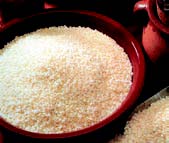
It is in the gastronomy that ingredient of which can never be dispensed and Aragon is at the moment the fifth producing community of Spain. The Aragonese irrigated areas flood the fields and give the native grain, clearly differentiated from that produced in the rest of the country.
The rice houses well with everything, has a multipurpose value. In desserts such as rice with milk, on which there is an Aragonese recipe of the eighteenth century, in dishes in which is combined with legumes, case of lentils with rice, a dish typically Aragonese …
MEATS
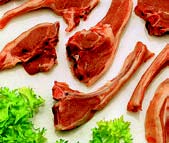 Lamb, pork, beef and poultry make up the extensive meat market in Aragon. Being an inland province, Huesca bases much of its cuisine on thousand and one type meats. Among these stands the ternasco, as it is known here the young lamb, who owns the Denomination of Origin, whose seal of guarantee, quality and provenance, has made it one of the emblematic products of this Autonomous Community. Also important is the beef from Huesca, the so-called Ternera de Raza Pirenaica, and since the Pyrenean Huesca constitutes an extensive reserve of wild boar, deer and roe deer, hunting is part of a good number of classic dishes of our province.
Lamb, pork, beef and poultry make up the extensive meat market in Aragon. Being an inland province, Huesca bases much of its cuisine on thousand and one type meats. Among these stands the ternasco, as it is known here the young lamb, who owns the Denomination of Origin, whose seal of guarantee, quality and provenance, has made it one of the emblematic products of this Autonomous Community. Also important is the beef from Huesca, the so-called Ternera de Raza Pirenaica, and since the Pyrenean Huesca constitutes an extensive reserve of wild boar, deer and roe deer, hunting is part of a good number of classic dishes of our province.
SWEETS
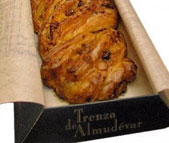
The catalog is so wide that we will only cite the most famous elaborations. Cakes of Ayerbe, chestnuts of Huesca, coc of Fraga, plait of Almudévar, cake Biarritz of Barbastro …
All the Aragonese towns have their own exclusive sweet. The inventive capacity of bakers is even more surprising when it is known that the list of basic ingredients of traditional confectionery is reduced to a few products: flour, sugar, honey, eggs, almonds and oil.
VEGETABLES
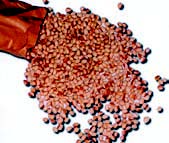 In Aragon there have never been lacking dishes that present to the legumes under the formula of pots, stews and traditional rotten pots or making good crumbs with different types of fish and even as ingredient of the salads or garnish. They have always been present in both popular and revised recipes. In the province of Huesca, “recaos” were always a very popular dish. The one of Binéfar incorporates beans, potatoes, rice, meat, bacon, ham and homemade sausages. But it has been the Boliches of Embún, in the valley of Echo, some of the legumes that more importance have charged. Lentils, for their part, are an inseparable companion of rice in Aragonese lands.
In Aragon there have never been lacking dishes that present to the legumes under the formula of pots, stews and traditional rotten pots or making good crumbs with different types of fish and even as ingredient of the salads or garnish. They have always been present in both popular and revised recipes. In the province of Huesca, “recaos” were always a very popular dish. The one of Binéfar incorporates beans, potatoes, rice, meat, bacon, ham and homemade sausages. But it has been the Boliches of Embún, in the valley of Echo, some of the legumes that more importance have charged. Lentils, for their part, are an inseparable companion of rice in Aragonese lands.
FISHES
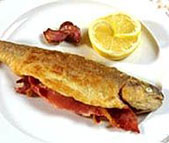 In Huesca fish have been consumed for a number of reasons: from the abundance of trout rivers and reservoirs, and from the discovery of man by drying, salting or smoking the fish caught offshore and transported without any deterioration.
In Huesca fish have been consumed for a number of reasons: from the abundance of trout rivers and reservoirs, and from the discovery of man by drying, salting or smoking the fish caught offshore and transported without any deterioration.
Marine fish were directed for centuries towards royalty, while the common people had to settle for the fish that was closest to them, mainly trout, lampreys and eels. Trout, conger and eel gave rise to an extensive cookbook with innumerable forms of preparation. With cod, whether fresh or salted, something similar has happened: that the recipes to turn it into a succulent dish have sprung up everywhere. Between all of them, the one of the cod to the ajoarriero has triumphed in all the line of floating.
CHEESES
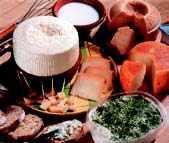
Almost thirty producers appear detailed throughout the three Aragonese provinces that make cheeses from cow, goat and sheep milks, and in all types, both fresh and cured. From the province of Huesca, we can highlight: Saravillo Cheese, Radiquero Cheese, Benabarre Cheese …
SOUPS
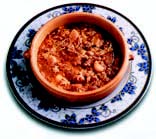
The Aragonese sopero catalog is not finished in the crumbs and the garlic soups and bread, as it is usually known.
In the past, there were soups of watercress, leeks and noodles, chicken broths and borage, and solid pottage in which all the imaginable products of the orchard, corral and fields converge.
Before the invasion of the Italian pasta, the noodles, incidentally, were made in Aragonese flour products, since the cereal wealth of the region had given rise to an own agri-food industry.
TRUFFLES
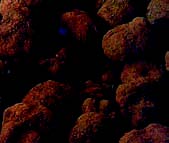
From early December to March, buyers and sellers meet in Graus and Mora de Rubielos one night a week along with Vic and Morella are the most important truffle markets in Spain.
The province of Huesca has the productive area in the regions of Ribagorza and areas of Sobrarbe, Graus, Benabarre and Aínsa.
VEGETABLES
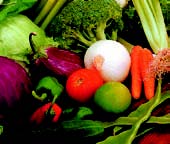 Aragon is the autonomous community inland that has more kilometers of rivers. The waters of the Ebro, the Gallego, the Huerva, the Cinca and others, bathe the orchards of the banks spreading a natural carpet of vegetables and vegetables.
Aragon is the autonomous community inland that has more kilometers of rivers. The waters of the Ebro, the Gallego, the Huerva, the Cinca and others, bathe the orchards of the banks spreading a natural carpet of vegetables and vegetables.
Special mention should be made of borage, one hundred percent Aragonese, with which first digestive dishes are made and, battered and fried, some sweets known as crespillos, typical of Barbastro.La garden is the joy of this land of wild landscapes. Joy for sight and also for the palate, because it provides fruits and simple pleasures.
WINES OF THE EARTH
At the foot of the Pyrenees, in the Comarca of Somontano devinos Huesca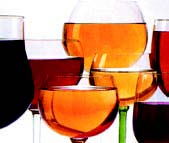
Barbastro, the denomination occupies 2,914.52 hectares dedicated to the cultivation of the vineyard. A total of 43 municipalities make up this denomination in which the varieties Macabeo, Garnacha blanca, Alcañón, Chardonnay and Gewürztraminer, in white, and Moristel, Tempranillo, Garnacha, Parraleta, Pinot Noir, Merlot and Cabernet-Sauvignon in inks are cultivated.
The number of processing wineries is 11, which, in turn, group 450 winemakers. The final result translates to a production that oscillates between the 10 and 11 million kilos of grapes that also attend the export.
The Somontano Denomination of Origin, when concentrating on a space not too extensive, favors that in the same day you can adjust several visits without having to travel excessively distantes.Una of the most dazzling and unknown to travel the somontano oscense, is Do it by visiting four of the most renowned wineries of the denomination. Winery Pirineos, Viñas del Vero and Bodegas Lalanne are practically one next to the other, to about three kilometers of Barbastro and from here taking the road to Salas Bajas we find Enate.
